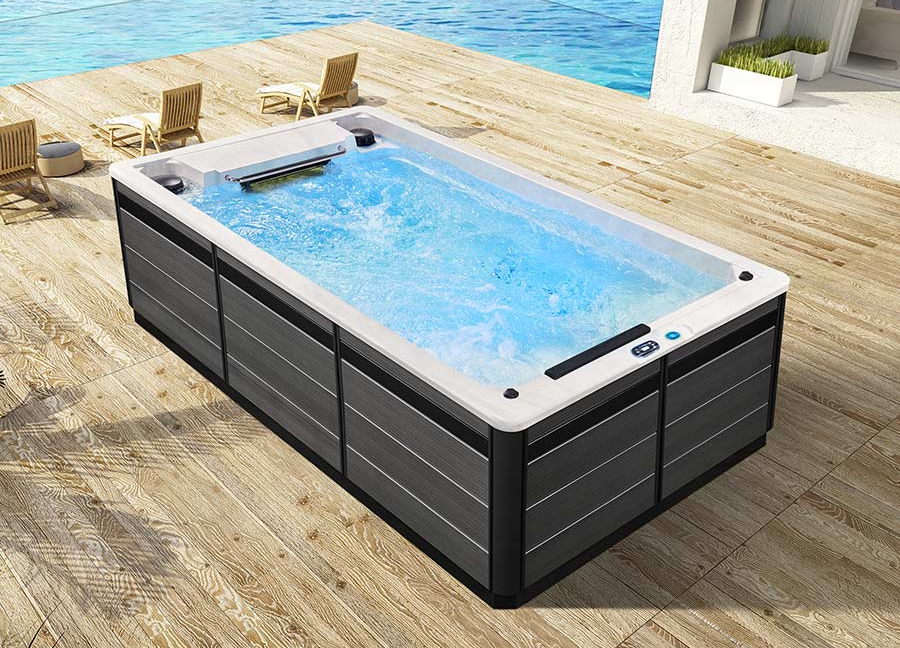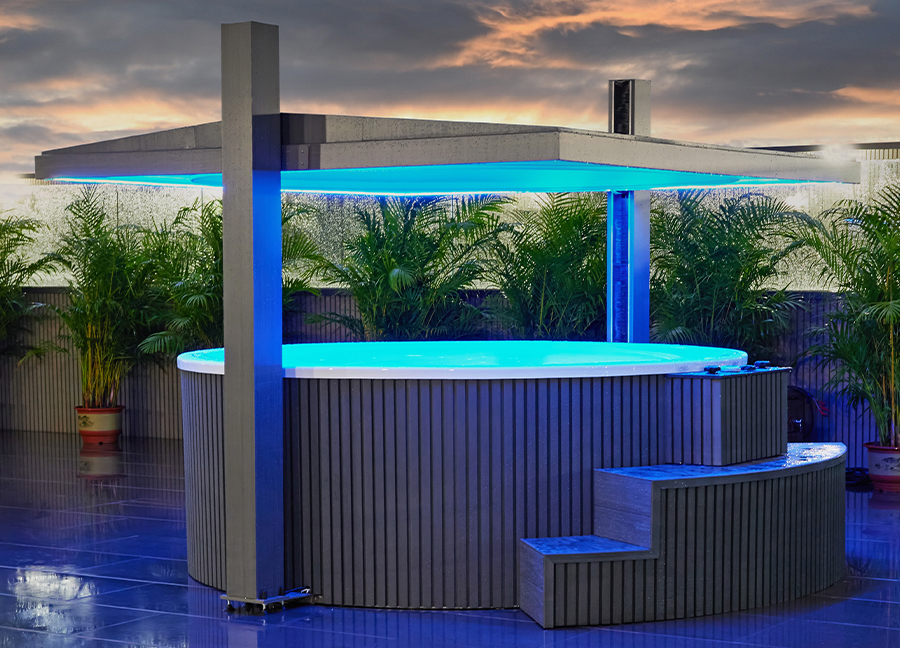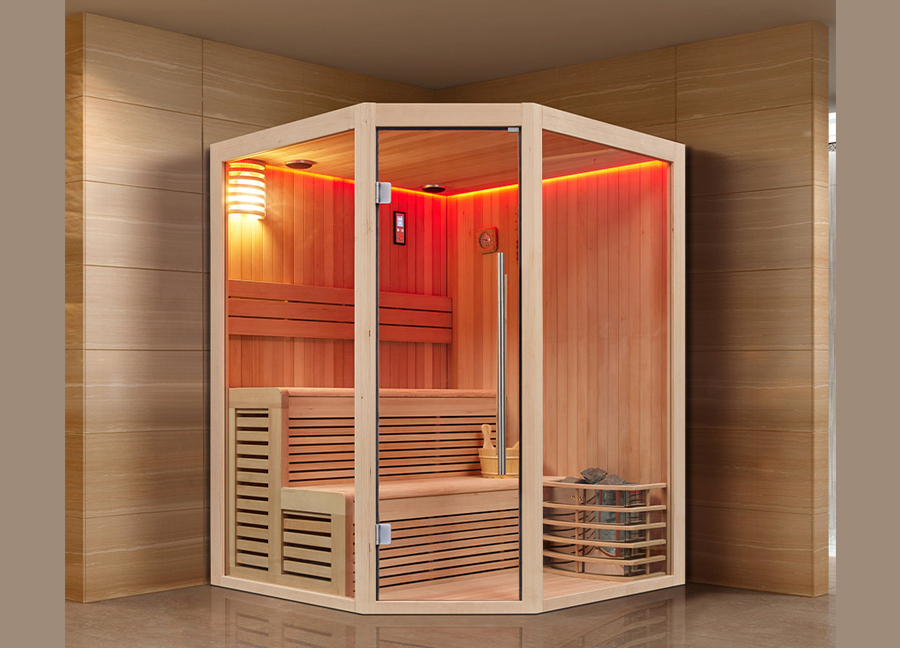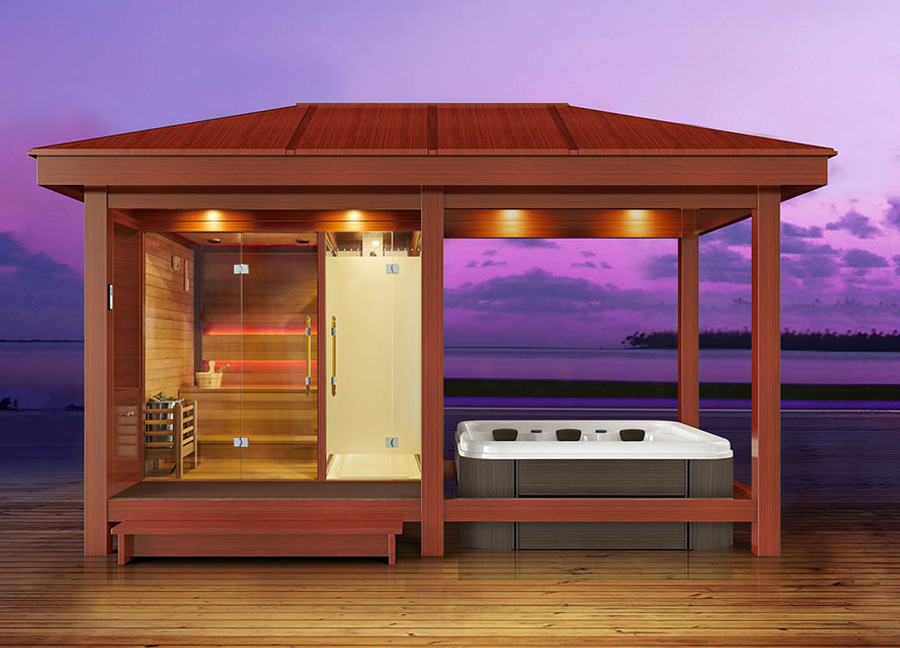In modern families and high-end leisure places, bathtubs are no longer just a single cleaning tool, but have become an important equipment for people to relax their bodies and minds and promote health. Especially today when the concept of high-quality life is becoming more and more popular, swim spa tubs and massage tubs are attracting more and more consumers' attention due to their unique functions and experience.
Although both are spa equipment, they have obvious differences in structural design, usage, technical configuration and applicable scenarios. So, for those who want to buy, how should they choose rationally?
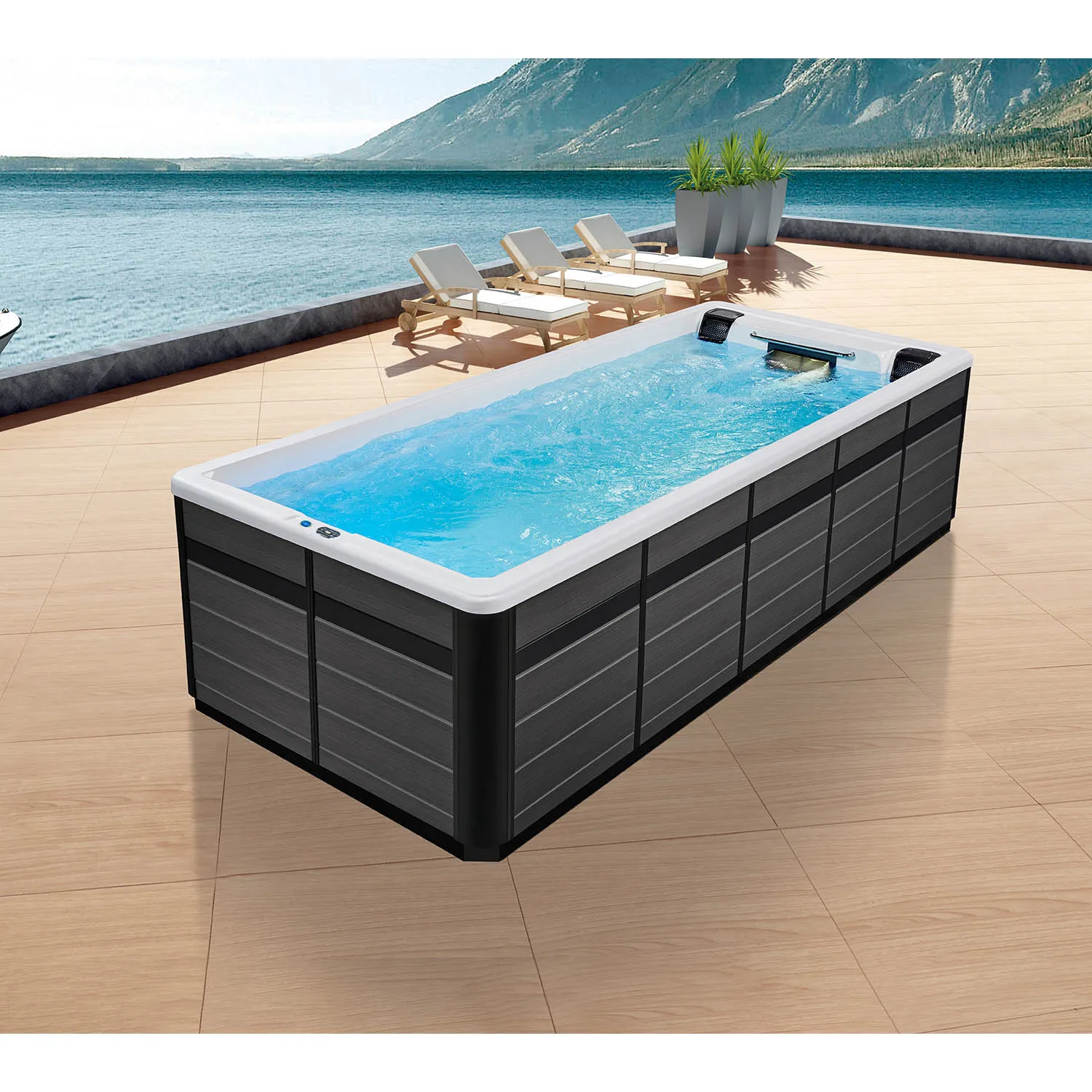
What is a swim spa tub?
1. Swim spa tub: a device that combines sports and spa
The swim spa tub is a high-end bathtub equipment that combines constant temperature swimming and spa massage functions. Its core concept is "combining movement and stillness". This type of bathtub simulates a river-like countercurrent water environment through a built-in strong water flow propulsion system, allowing users to swim continuously in a limited space. At the same time, it is also equipped with a spa massage nozzle, which has the health care function of soothing muscles and promoting blood circulation.
Working principle of swim spa tub:
Swim spa tub uses powerful water pump and jet system to form a water flow belt with adjustable flow rate. Users can set water flow resistance according to their swimming level. In addition, the system is equipped with filter device, thermostat controller and air mixing nozzle to ensure water quality safety, constant temperature and hydrotherapy effect.
What is massage tub?
1. Massage tub: hydrotherapy equipment with static bath as the core
Massage tub is mainly used for static immersion and local massage. It drives water flow through water pump, mixes water and air through nozzle and sprays out, thus forming water pressure of different intensity, and rhythmically massages the back, shoulders, neck, legs, etc. of the human body. Massage tub focuses more on "relaxation" and "recovery", especially suitable for quiet enjoyment after fatigue.
Working principle:
Massage tub mainly relies on bubble nozzle, vortex pump and thermostat heater to form a system. Users can adjust the nozzle direction, water flow intensity and massage mode to make the bathing process a customized experience. Some high-end products are also equipped with light therapy, aromatherapy or Bluetooth music functions to enhance the relaxation effect.
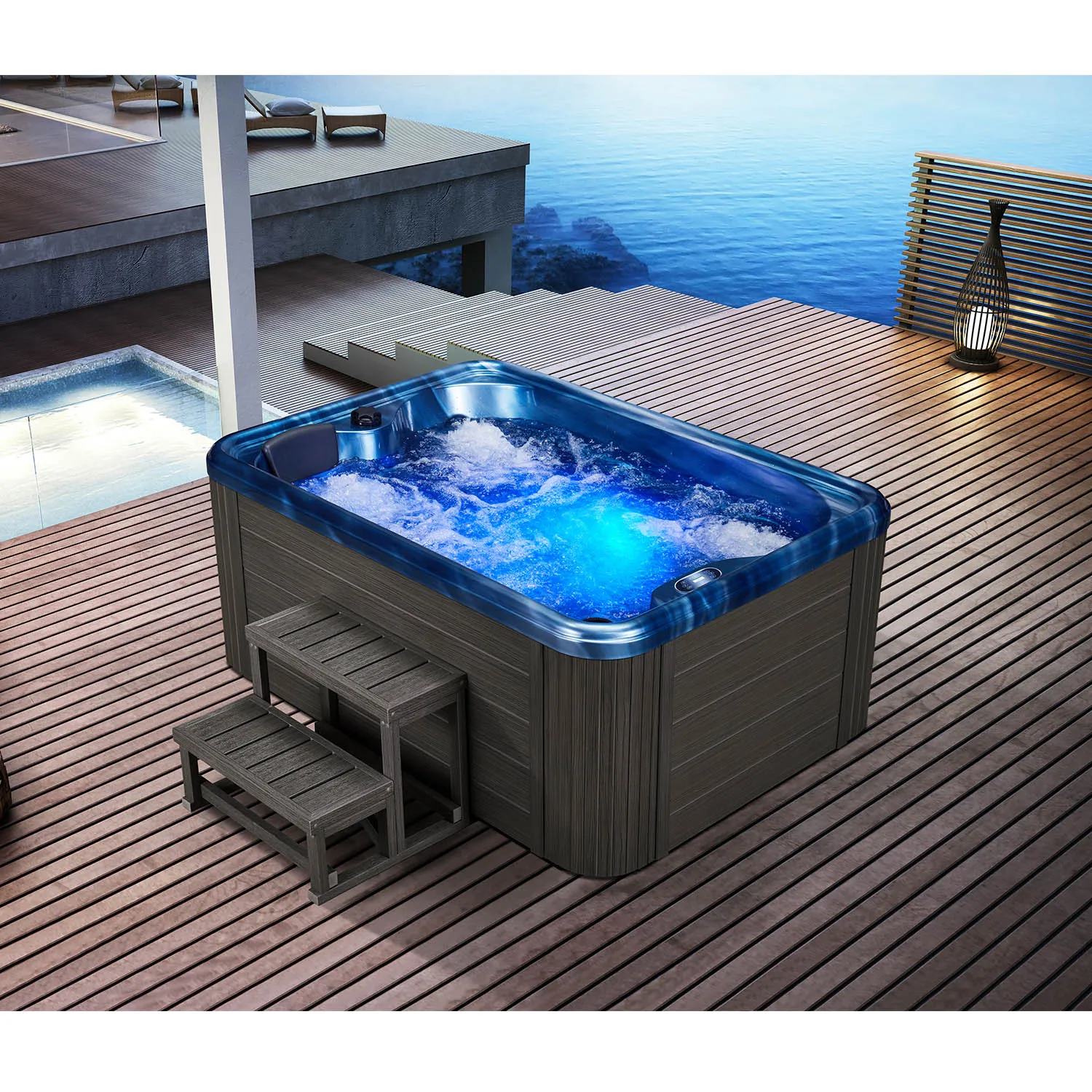
Swim spa tub and massage tub: the difference between suitable groups
1. Fitness and rehabilitation: the strengths of swim spa tub
For people who need daily aerobic exercise, rehabilitation training or muscle strengthening, swim spa tub has irreplaceable advantages. Because it simulates the swimming environment, it can achieve continuous swimming and indoor exercise without being affected by the outside weather. It is an ideal choice for fitness enthusiasts and physical therapy people.
Swim spa tub is suitable for people:
·Fitness trainers (such as swimmers)
·Arthritis or postoperative rehabilitation patients
·People who need to control weight or enhance cardiopulmonary function
2. Relaxation and daily relief: the preferred positioning of massage tub
The focus of massage tub is "relaxation" and "relief". Through water pressure massage of key parts, it helps to relieve fatigue, improve sleep and release stress. This static bath is very suitable for use after get off work or before bed, especially for people with stiff shoulders and necks or long-term sitting.
Massage tub is suitable for the following groups:
· Urban white-collar workers who are under great work pressure and need to relax
· Chronic fatigue or sleep disorder patients
· Family members who love bathing culture
Swim spa tub and massage tub: Differences in installation requirements
1. Swim spa tub requires more space
Due to its complex structure and large size, swim spa tub usually requires a larger installation site. Its length is generally between 4 meters and 6 meters, and its width is also more than 2 meters. Therefore, it is more suitable for installation in villas, terraces, ground courtyards or large indoor gyms. Supporting conditions such as foundation load-bearing, water and electricity layout and drainage system should also be considered.
Main points for installation of swim spa tub:
· Professional construction team is required
· High power supply is required (generally 220V or 380V)
· Ventilation and drainage conditions must be complete
2. Massage tub is relatively flexible
In contrast, the size of massage tub is more flexible. There are both single-person independent bathtubs and large bathtubs for 2-4 people on the market. Its installation method is also more flexible. It can be placed in the bathroom, balcony or indoor corner. Some products support embedded or free placement, and are more adaptable to space.
Massage tub installation points:
·Generally, 220V household power supply is sufficient
·Good waterproofing and leakage protection must be ensured
·Drainage system must be unobstructed
Swim spa tub and massage tub: Difference in usage cost
1. The operating cost of swim spa tub is higher
Due to the large water pump, heating system and water circulation equipment, swim spa tub consumes more electricity when in use. In addition, the water volume is usually more than 4,000 liters, and the cost of daily water treatment, filtration and replacement cannot be ignored. Therefore, its operation and maintenance costs are much higher than ordinary bathtubs.
Swim spa tub cost structure:
·Water and electricity consumption (the average monthly electricity bill may be hundreds of yuan or even more)
·Water treatment agent and filter equipment replacement cost
·Maintenance and repair (the electronic control system and nozzle system are complex)
2. The operation cost of massage tub is lower
The water capacity of massage tub is generally between 200-500 liters, the power of water pump and heater is relatively low, and the energy consumption and consumables cost of daily use are relatively small. Even if used daily, its operating cost is within the affordability of ordinary families.
Cost structure of massage tub:
·Moderate electricity cost
·Cleaning agent and simple filter maintenance
·Relatively low failure rate, simple maintenance
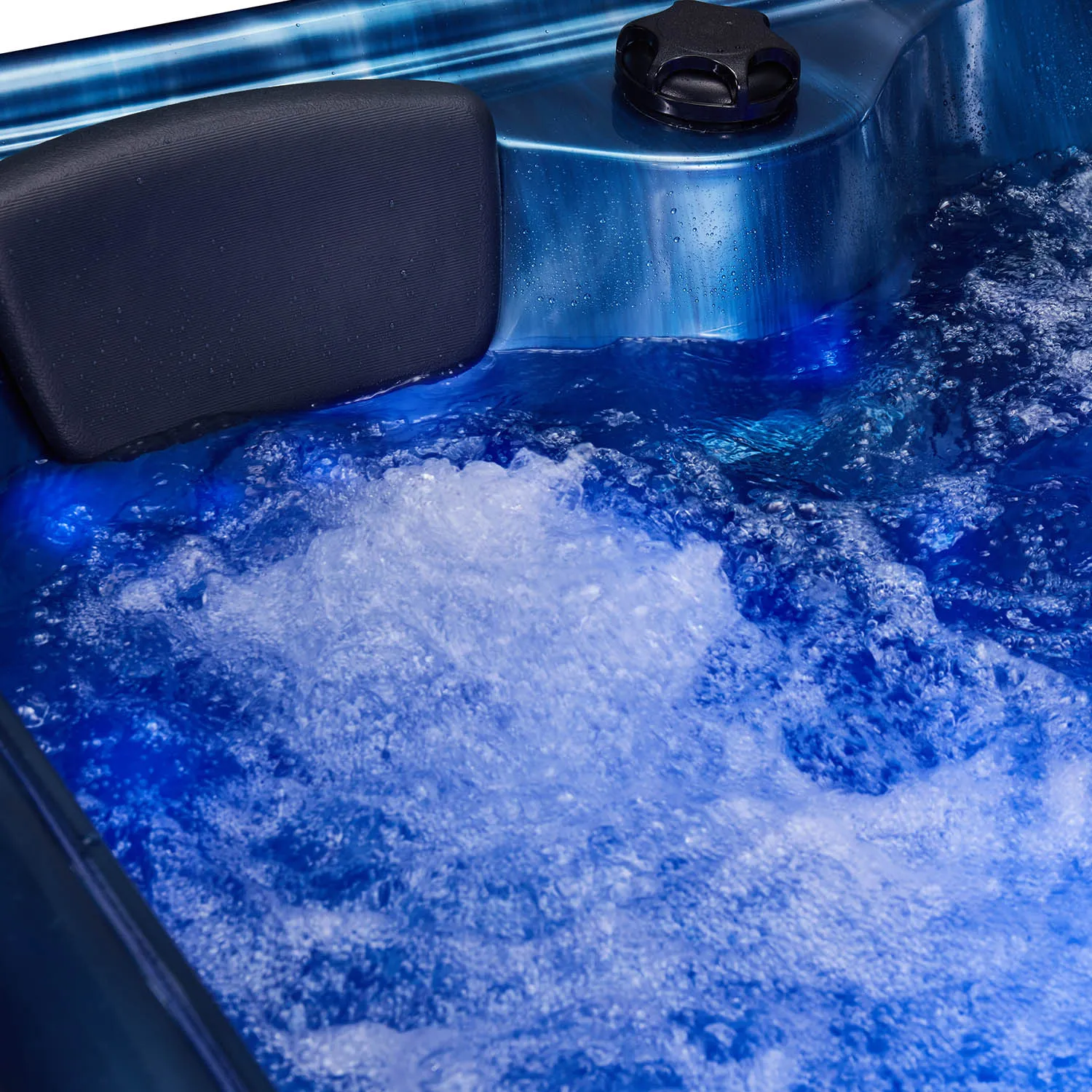
Differences between swim spa tub and massage tub: technical configuration
1. Swim spa tub configuration is more complex
In order to support different water flow intensities, swimming style adjustment and efficient hydrotherapy, swim spa tubs are usually equipped with multiple sets of programmable control panels, supporting remote control, intelligent heating, automatic water circulation, constant temperature monitoring and other functions. In addition, some high-end models also introduce intelligent health systems such as underwater speakers, LED light strips and wireless heart rate monitoring.
2. Massage tub functions are mainly for comfort
Massage tubs focus more on personalized adjustment of bathing experience, such as multi-stage nozzle massage mode, bubble massage, constant temperature control, aromatherapy infusion device and lighting atmosphere system. Although the technical configuration has also developed intelligently, the operation logic is more intuitive and simple, suitable for users of all ages.
Swim spa tub and massage tub: safety and service life considerations
1. Swim spa tub has higher safety requirements
Due to the presence of multiple motors and large water bodies, swim spa tubs have strict standards for circuit insulation, leakage protection, child safety locks, etc., and require regular inspection and maintenance. If not managed properly, there may be problems with electrical safety or water pollution.
Recommendations:
Choose big brand products with international certifications (such as UL, CE), and regularly check the operating status of the equipment.
2. The safety of massage tubs is relatively controllable
Although massage tubs also involve heating and electric water pumps, their structure is relatively simple, and the probability of safety hazards is lower. As long as the installation complies with electrical safety regulations and the operation is carried out according to the instructions, it can be used stably for many years.
Swim spa tub and massage tub: cost-effectiveness analysis
1. Swim spa tub: high price and high value
The price range of swim spa tubs on the market is generally between 30,000 and 200,000 yuan, depending on the size, configuration and brand. Although the initial investment is high, it combines fitness and spa, and has a high comprehensive value for those who focus on a healthy lifestyle.
2. Massage tub: Balanced cost-effectiveness
A massage tub can be purchased at a mid-to-high-end price between 20,000 and 80,000 yuan. It has various functions and is easy to operate. It is the preferred choice for most families to improve their quality of life. For those with limited budgets, the cost-effectiveness is more prominent.
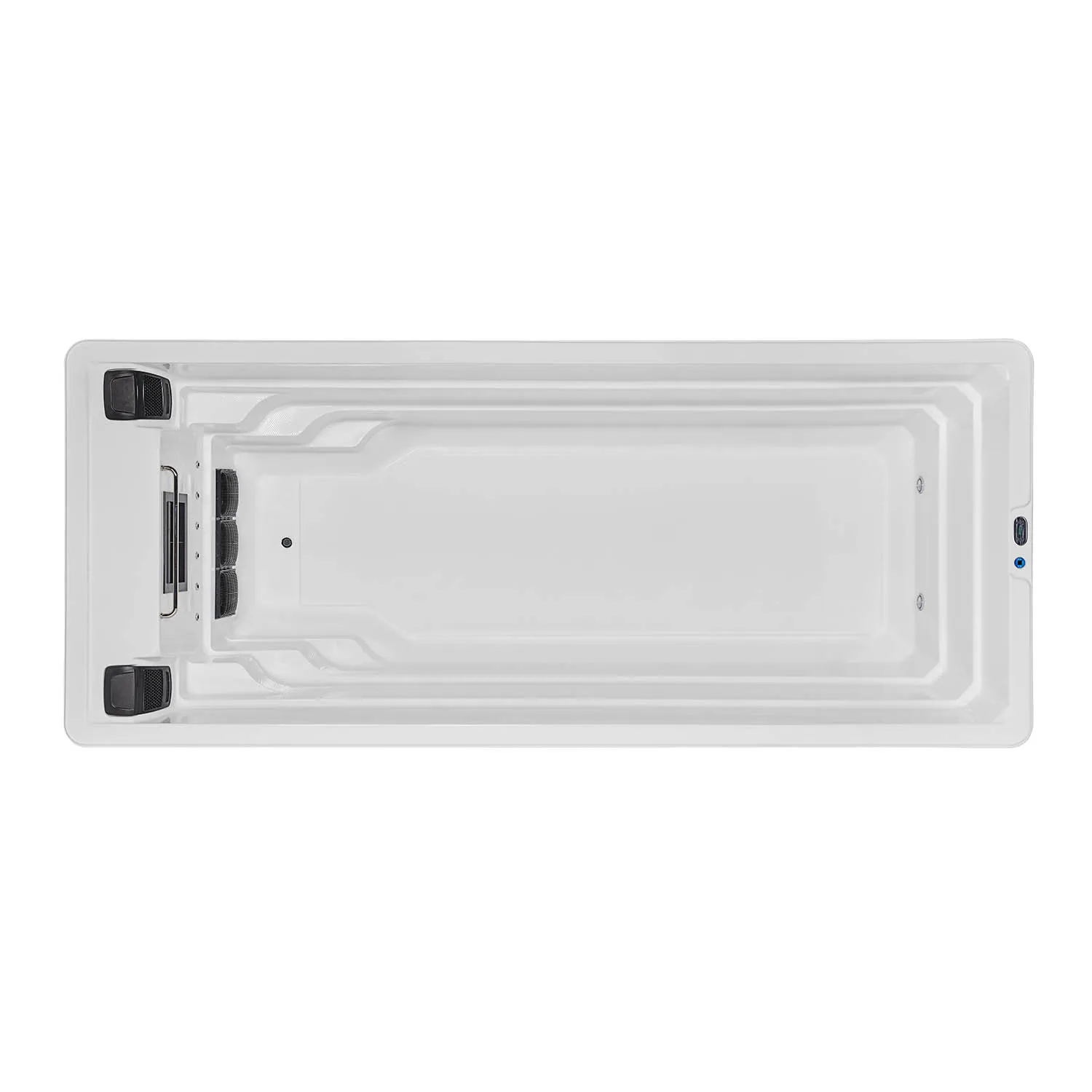
Swim spa tub and massage tub: How to choose according to your own needs?
In summary, we can make choices based on the following core dimensions:
Dimensions | Swim Spa Tub | Massage Tub |
| Main functions | Swimming + Spa | Bath + Massage |
| Space requirements | Large | Medium to small |
| Usage scenarios | Fitness, rehabilitation, home pool replacement | Daily relaxation, improved sleep |
| Cost level | High initial investment, high operating cost | Low initial cost, low operating cost |
| Operation complexity | High, need to be familiar with the operating system | Intuitive operation, suitable for everyone |
| Applicable groups | Sports rehabilitation population | Tired office workers, home use |
| Technical configuration | High degree of intelligence | Multiple functions, preference for comfort |
Can I Customize Design, Color, and Accessories of Spa & Sauna Products?
Absolutely. MEXDA offers comprehensive customization services for spa and sauna units—covering dimensions, wood finishes, accessory layouts, controls, cabinetry, lighting, and more. Thanks to our robust in-house R&D team and high-tech shop floor (including CNC machining and robotic spray machines), we handle complex OEM design requests with ease.
Clients can purchase tailored models, select materials and brands of components, and receive competitive quotes. Bulk purchasing qualifies for special discounts, while smaller runs are also welcome for customized prototypes or pilot orders.

